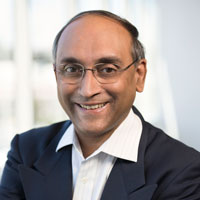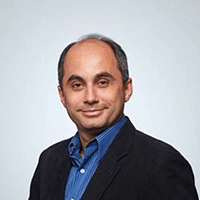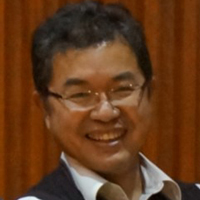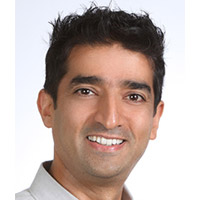
John Bowers
Director, Institute of Energy Efficiency
University of California
Santa Barbara, CA, USA
Title: High Speed, High Bandwidth Density, High Efficiency Optical Interconnects
Abstract: Photonics can reduce energy consumption in information processing and communications while simultaneously increasing the interconnect bandwidth density. The energy consumption in data centers is shifting from logic operations to interconnect energies. Without the prospect of substantial reduction in energy per bit communicated, the exponential growth of our use of information is limited. The use of optical interconnects fundamentally addresses both interconnect energy and bandwidth density, and is the only scalable solution to this problem. With the use of photonic integration and fiber optics, and the elimination of electrical line charging dissipation, we can save power by transmitting data from 1 mm to 1 km with the same energy (20 fJ/bit) and simplicity as local electrical wires on chip. A focus of our research is on using quantum dot (QD) lasers and integration on silicon for lower threshold and higher efficiency sources, higher temperature operation, isolator free operation, and superior mode locking capability. A recent example includes a 4.1 Tbps, 60 wavelength, 32 Gbaud PAM-4 transmitter using a single mode locked quantum dot laser.
Biography: John Bowers is Director of the Institute for Energy Efficiency and a professor in the Departments of Electrical and Computer Engineering and Materials at the University of California, Santa Barbara. His research interests are primarily concerned with silicon photonics, optoelectronic devices, optical switching and transparent optical networks and quantum dot lasers. Bowers received the M.S. and Ph.D. degrees from Stanford University and then worked for AT&T Bell Laboratories before joining UCSB. Bowers is a fellow of the IEEE, OSA and the American Physical Society, and a recipient of the IEEE Photonics Award, OSA/IEEE Tyndall Award, the IEEE LEOS William Streifer Award and the South Coast Business and Technology Entrepreneur of the Year Award. He is a member of the National Academy of Engineering and the National Academy of Inventors.

Ravi Mahajan
Intel Fellow and Co-director
Pathfinding and Assembly and Packaging Technologies
Title: Advanced Packaging for Heterogeneous Integration
Abstract: Heterogeneous Integration (HI) of disparate computing and communications functions is a key performance enabler in micro-electronic systems. HI is crucially enabled by advanced packaging since packages offer compact, power efficient platforms for HI. This talk will describe the role of advanced 2D and 3D packaging in enabling HI and will focus on the evolution of packaging to provide increased interconnect density. Key high end technologies such as EMIB, the Silicon Interposer and Foveros will be discussed in this context. The talk will also touch on the evolving future challenges in interconnect density scaling. In addition to interconnect scaling, challenges and opportunities in key areas such as power management, high speed IO, thermal management and test will be briefly discussed.
Biography: Ravi Mahajan is an Intel Fellow and the Co-director of Pathfinding and Assembly and Packaging technologies for future silicon nodes. Ravi also represents Intel in academia through research advisory boards, conference leadership and participation in various student initiatives. Ravi has led efforts to define directions for package architecture, technologies and assembly processes at Intel since 2000, spanning 90nm, 65nm, 45nm, 32nm, 22nm and 7nm silicon. Earlier in his Intel career, he spent five years as group manager for thermal mechanical tools and analysis. In that role, Ravi oversaw a Thermal-Mechanical Lab chartered with delivering detailed thermal and mechanical characterization of Intel’s packaging solutions for current and future processors. A prolific inventor and recognized expert in microelectronics packaging technologies, Ravi holds more than 40 patents, including the original patent for a silicon bridge that became the foundation for Intel’s EMIB technology. His early insights also led to high-performance, cost-effective cooling solutions for high-end microprocessors and the proliferation of photo-mechanics techniques used for thermo-mechanical stress model validation. Ravi has written several book chapters and more than 30 papers on topics related to his area of expertise. Ravi joined Intel in 1992 after earning a bachelor’s degree from Bombay University, a master’s degree from the University of Houston, and a Ph.D. from Lehigh University, all in mechanical engineering. His contributions during his Intel career have earned him numerous industry honors, including the SRC’s 2015 Mahboob Khan Outstanding Industry Liaison Award, the 2016 THERMI Award from SEMITHERM, the 2016 Allan Kraus Thermal Management Medal from the ASME and the 2018 InterPACK Achievement award. He has been nominated as an IEEE EPS Distinguished Lecturer. He is one of the founding editors for the Intel Assembly and Test Technology Journal (IATTJ) and currently VP of Publications & Managing Editor-in-Chief of the IEEE Transactions of the CPMT. Additionally he has been long associated with ASME’s InterPACK conference and was Conference Co-Chair of the 2017 Conference. Ravi is a Fellow of two leading societies, ASME and IEEE. He was named an Intel Fellow in 2017.

Burak Ozpineci
Group Leader
Oak Ridge National Laboratory
Title: Wired and Wireless Charging: Status, Challenges and Opportunities
Abstract: With the recent demand for faster charging electric vehicles to rival the refill time of conventional vehicles, the interest in high power wired and wireless charging is increasing. While recent industry demonstrations have shown 450kW wired charging, Oak Ridge National Laboratory (ORNL) has recently demonstrated a 120kW static wireless charging system using a single power conversion system and a single transmitter/receiver coil pair. Now the focus switches to more than 300kW wireless charging and dynamic wireless charging. This presentation will talk about current status in wired and wireless charging, the associated challenges with a focus on packaging, and the opportunities in this area.
Biography: Burak Ozpineci received the M.S. and Ph.D. degrees in electrical engineering from the University of Tennessee, Knoxville, TN, USA, in 1998 and 2002, respectively. He joined the Post-Masters Program with the Power Electronics and Electric Machinery Research Center, Oak Ridge National Laboratory (ORNL), Knoxville, TN, USA, in 2001 and became a Full-Time Research and Development Staff Member in 2002 and Group Leader of the Power and Energy Systems Group in 2008. He is currently leading the Power Electronics and Electric Machinery Group and managing the Electric Drive Technologies Program at ORNL. He also serves as a Joint Faculty Associate Professor with The Bredesen Center at The University of Tennessee, Knoxville.

John Rogers
Louis Simpson and Kimberly Querrey
Professor of Materials Science and Engineering
Biomedical Engineering and Medicine at Northwestern University
Title: Soft Electronic and Microfluidic Systems for the Skin
Abstract: Recent advances in materials, mechanics and manufacturing establish the foundations for high performance classes of electronics and other microsystems technologies that have physical properties precisely matched those of the human epidermis. The resulting devices can integrate with the skin in a physically imperceptible fashion, to provide continuous, clinical-quality information on physiological status. This talk summarizes the key ideas and presents specific examples in wireless monitoring for neonatal intensive care, and in capture, storage and biomarker analysis of sweat.
Biography: Professor John A. Rogers is the Louis Simpson and Kimberly Querrey Professor of Materials Science and Engineering, Biomedical Engineering and Medicine at Northwestern University, with affiliate appointments in Mechanical Engineering, Electrical and Computer Engineering and Chemistry, where he is also Director of the newly endowed Center for Bio-Integrated Electronics. He has published more than 650 papers, is a co-inventor on more than 100 patents and he has co-founded several successful technology companies. His research has been recognized by many awards, including a MacArthur Fellowship (2009), the Lemelson-MIT Prize (2011), and the Smithsonian Award for American Ingenuity in the Physical Sciences (2013) – and most recently the Benjamin Franklin Medal from the Franklin Institute (2019). He is a member of the National Academy of Engineering, the National Academy of Sciences, the National Academy of Inventors and the American Academy of Arts and Sciences.

Masumi Sato
Corporate Associate Vice President
Deputy General Manager of Commercial Printing Business Group
Ricoh
Title: Sustainability of Commercial Printers
Abstract: Ricoh has consistently provided innovative products and services with the fundamental concept of “Ease of Use and Energy Saving”. We offer innovative energy-efficient technologies for business needs. For example, we have worked on developing QSU (Quick Start-Up) technology for office printer to provide customers with energy-saving mode stress-free operation. In this presentation, innovative technologies for commercial printers and industrial ones will be explained, and future printers that enable individuals to work smarter will be mentioned.
Bio: Masumi Sato received his MA in applied physics from the University of Nagoya and joined Ricoh Company Ltd. in 1989. Since then he has been working in research and development section at Ricoh. From 2006, he has been engaging in Commercial Printing (CP), and now he is managing both development and business of CP.

Mohak Shah
Vice President of AI and Machine Learning
LG Electronics
Title: Building Trust in AI Systems
Abstract: AI and data-driven decision-making capabilities are becoming ubiquitous. These algorithms become part of increasingly sophisticated systems that impact not just safety-critical products but also social interactions, discourse and institutions. It is important that the practitioner community accept and adopt a broader role in ascertaining the behavior of these systems going beyond just algorithm-level evaluation. The implications of these systems need to be well-are understood not just as isolated technical components but as part of overall systems, their interaction with the intended users and the environment. While global efforts have been initiated to develop guidelines for AI, ranging from ethics to procurement, they are not yet actionable. This talk will highlight how vulnerabilities can become systemic in AI systems and can have unintended, but serious, consequences. It will also cover how the practitioners can get more involved in understanding the system-level interactions and educate the adoption process to be cognizant of technology’s limitations.
Biography: Mohak Shah is a technology leader and technologist with an established history of leading high-impact initiatives in AI, IoT, digital transformation, and building data-driven businesses and strategies. He is deeply passionate about responsible development, introduction, adoption, and integration of AI capabilities in industry and society at large. His experience in leading technology initiatives spans a broad range of verticals including autonomous driving, automotive, aviation, energy and healthcare leading diverse teams from research, software, and businesses. As a machine learning and AI scientist, Mohak has developed novel technologies with high impact business applications. He is the author of "Evaluating Learning Algorithms: A Classification Perspective" (Cambridge), and has published more than 45 research articles, in top conferences and journals in the analytics space, and patented technologies. Mohak regularly contributes to the community through participation in scientific panels, organizing committees, review committees, and social impact programs. He was the General Chair of ACM SIGKDD 2016 conference. He also holds an adjunct faculty position with the University of Illinois (Chicago).